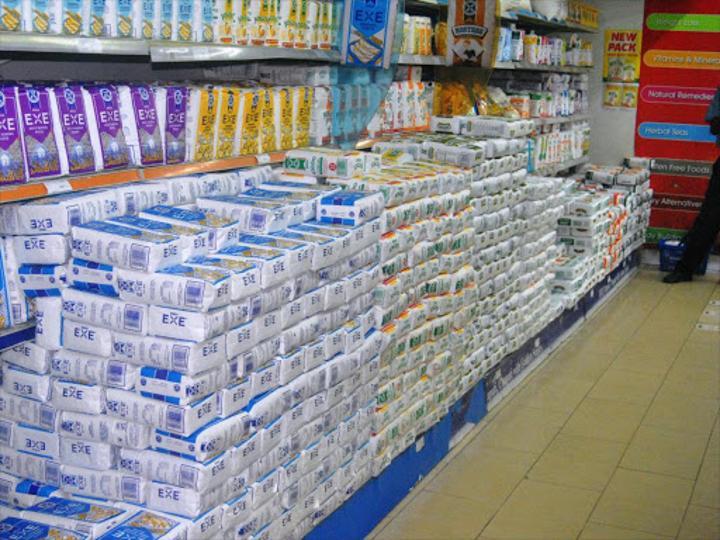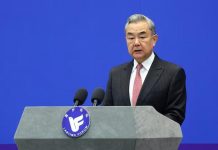Africa-Press – Kenya. Consumers in the country have been grappling with a rising cost of living in the past three years, occasioned by high fuel and food prices stemming from high importation costs.
The runaway cost of bringing in the essential commodities was pegged on the weak local currency which as of late January 2024, had shed about 60 units value to trade at 161 against the global benchmark, the US dollar.
The trend is however on reverse now, as the local currency is gaining its lost value at a faster pace than that of weakening, easing pressure on importers, hence reduced commodity prices.
Since early February when it started appreciating, it has gained about 31 units, an equivalent of 19 per cent.
This means importers are now spending close to Sh20 less to buy a dollar for imports unlike two months ago.
Compared to the period when it started weakening, early 2020, the shilling has gained close to 30 units, or just about 30 per cent appreciation.
The gain is almost half the value it had lost in four years.
The Central Bank of Kenya on Friday quoted the shilling at 130.35.
Speaking in February while in Naivasha for a four day Cabinet retreat, President William Ruto said the shilling’s appreciation was as a result of the successful inaugural $2 billion Eurobond buy back plan.
The exchequer paid back $1.5 billion, a settlement Ruto said did good to the economy by boosting investor confidence.
“Investor confidence has been significantly enhanced, resulting in the appreciation of the shilling against the US dollar,” Ruto said.
He further disclosed that the money used for the buy back was raised through the recently issued Eurobond Worth $1.5 billion.
The new loan is divided into three instalments, with a weight average life of six years and is expected to mature in 2031.
The bond is priced at 10.37 per cent, the highest rate an African state has ever offered.
Effects of reduced importation cost often trickles down to consumers, as Kenya is still a net importer.
As a result, prices of food and non-food commodities have been on the decline, bringing down the level of inflation.
Evidently, inflation levels started retreating few months ago, reaching 5.7 per cent in March, from 6.8 and 6.3 in January and February, respectively.
The general cost of living had skyrocketed to levels witnessed six years ago when it hit above the nine per cent mark.
It reached 9.18 per cent in September 2022, from the lows of five in February the same year.
According to Kenya National Bureau of Statistics (KNBS), the easing inflation is mainly attributed to the decline in prices of food items, fuel and electricity.
“Price changes in food, energy and transport, which cover about 57 per cent of household budgets, majorly accounted for the inflation levels,” KNBS says.
“Prices of maize flour loose, maize flour-sifted, sugar and fortified maize flour dropped by 9.6. 5.8, 5.3 and 5.1 per cent, respectively between February 2024 and March 2024.”
However, the prices of onions- leeks and bulbs, mangoes and potatoes (Irish) however increased by 11.1, 8.0 and 7.7 per cent, respectively.
During the same period, prices of kerosene went down by 2.3 per cent.
Transport index also decreased by 0.6 per cent between February 2024 and March 2024, mainly attributable to a drop in prices of petrol and diesel by 3.5 per cent and 2.6 per cent, respectively.
The Central Bank of Kenya in its latest Monetary Policy Committee (MPC) meeting, attributed the easing general cost of living on the continued tightening of the monetary policy, retaining the base lending rate at 13 per cent.
It also noted that the ongoing harvests and favourable weather conditions has boosted the supply chain, cutting down the inflation levels.
“Overall inflation is expected to moderate further in the near term, supported by easing food and energy prices, pass-through effects of the recent exchange rate appreciation, and the impact of monetary policy actions that continue to filter through the economy,” CBK said.
World Bank has also reiterated that the Shilling is strengthening because CBK rate increased to 13 per cent and the $1.5 billion raised to repay the Eurobond maturing in June.
Further in its recent regional outlook report, it listed the Kenyan Shilling as the best performing currency in the Sub-Saharan Africa.
“The Kenyan shilling is the best-performing currency in the subcontinent as it recorded an appreciation of 16 per cent so far this year. After strengthening by 14 per cent by mid-February,” World Bank said.
A strengthening shilling also reduces pressure on the country’s forex reserves.
Reserves are mostly dollar-denominated and act as buffers to potential external shocks for the country. They have been on the rise in the past one month.
CBK’s data shows reserves had risen by 3.3 per cent to stand at $7.1 billion (Sh923.4 billion) which is equivalent to 3.8 months of import cover, as of April 4.
Although still below the statutory level of at least for months of import cover, the apex bank maintains that the level meets its requirement to endeavor to maintain at least four months.
For More News And Analysis About Kenya Follow Africa-Press






